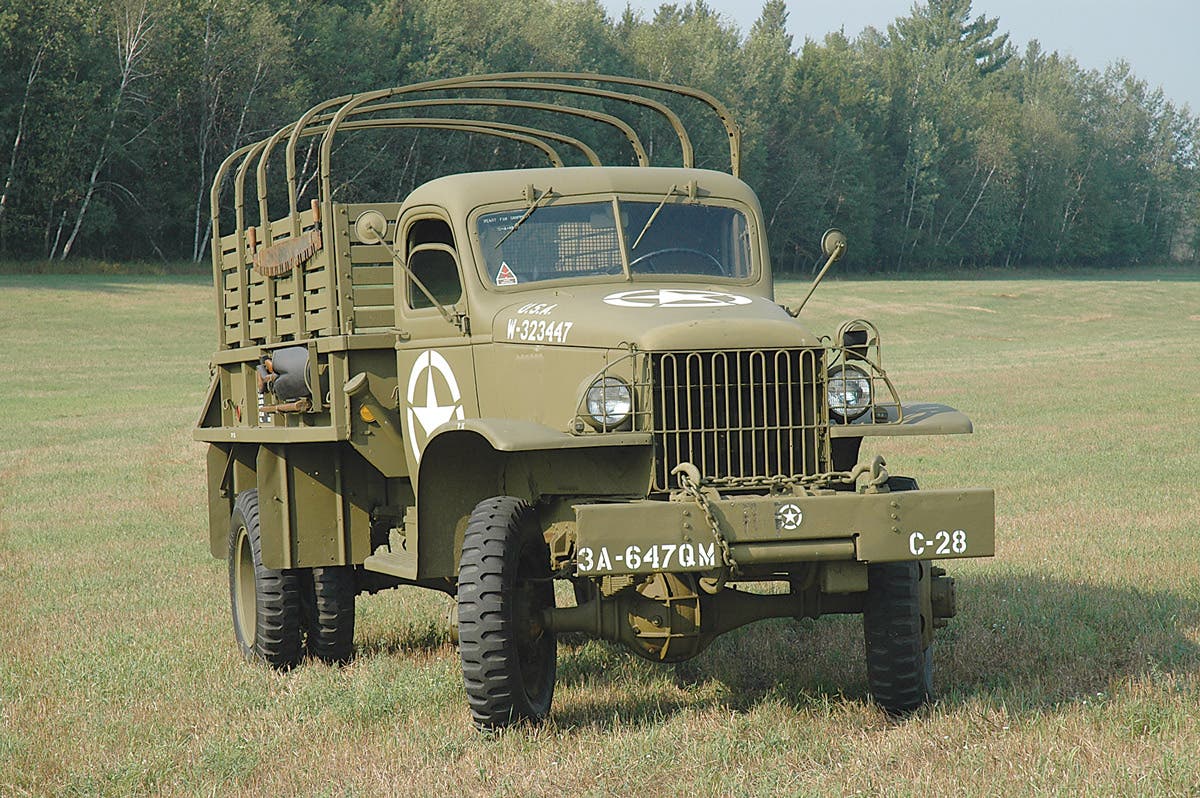MV Buyer’s Guide: WWII DODGE 3/4-Ton Trucks
G-502 Trucks were used in WW2 and Korean War
The WWII G-502 Truck.
Common name: WC
Nickname: Weapons Carrier
The Dodge 3/4-ton trucks of WWII are probably the most popular historic military vehicles (HMVs) of the era except for Jeeps. Production began in 1942 and thousands were built, including many variants such as ambulances, command cars, carryalls, radio vehicles, panel trucks and a telephone maintenance unit. There was also a three-axle, 1 1/2-ton six-wheeled version that could be called a variant, even though it had its own G-number: the G-507.
The 3/4-ton WC Dodges were basically improved models of the 1/2-ton Dodge 4 x 4s of pre- and early WWII production. The 3/4-ton trucks can be most easily differentiated from the 1/2-ton models by their flat grilles. The 1/2-ton trucks usually had rounded grilles.
Like most HMVs of the era, the G-502 family was very simple and rugged vehicles that were easy to maintain and repair with basic tools. Except for specialized variants, finding parts and accessories for WCs is no more difficult or expensive in the MV world than finding parts for Jeeps. Additionally, many parts from tune-up items to transmissions and engines can still be found from civilian sources.
If you want a WWII-era military vehicle that was larger than a Jeep but small enough to fit in an average home garage, then a Dodge WC 3/4-ton truck is an excellent choice.
Many WCs, especially ambulance variants, also served in Korea, and many were mothballed by other armed forces and are still being released today. While the basic cargo truck model was an open cab some closed cab variants were built and, of course, the carryall and panel models were closed cab.
Although feeling heavy and underpowered by today’s standards, WCs are comfortable trucks to drive, and I once drove a carryall model from Arizona to Missouri while towing a 1955 Chevrolet panel truck. A WC would make a good daily-driver, as long as one didn’t have to travel on freeways, because its safe cruising speed is 45mph.
While these trucks have no common faults or quirks, they are becoming prone to breaking axle shafts and drive train components due to age and metal fatigue, which is something to consider if one plans to use them for actual work or off-road driving. Many WCs were fitted with self-recovery winches and these winches are still available as used units. Arctic hard cabs are also available, as are lockout hubs.
BASIC SPECS:
- Engine: Dodge 6-cylinder, gasoline, L-head, 230 cid. 76 hp. (most models)
- Transmission: 4-speed manual
- Transfer case: 2-speed (separate from transmission). Many carryalls and some other variants had 1-speed transfer cases.
- Electrical system: 6-volt. Some carryalls and radio variants had 12-volt systems.
- Tire size: 9.00 x 16
- Fuel capacity: 30 U.S. gallons (most models)
- Approximate range (highway): 240 miles (most models)
- Rated cargo capacity: 750 lbs. (most models)
- Rated towed load: 4000 lbs. (most models)
The basic values and desirability of Dodge WCs vary greatly depending upon the variant and overall condition. Beaters or basket-cases of the basic open cab cargo truck can still be found for under $1,500. On the other end of the scale, a very rare variant, such as the WC-64 “knock-down” ambulance when fully and correctly restored, can go for over $20,000. When considering a WC for restoration, one should do a lot of research into the model or variant in which one is interested.
This is relatively simple due to the large number of units in the MV hobby and the extensive information available. With careful shopping, one should be able to drive a WC home for an average price of $7,500.








